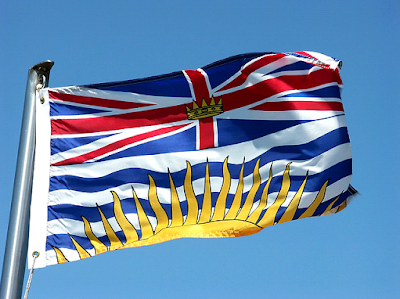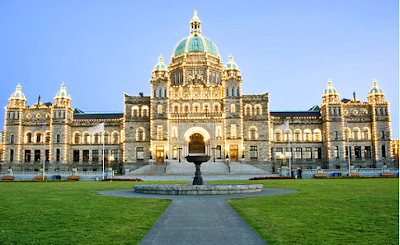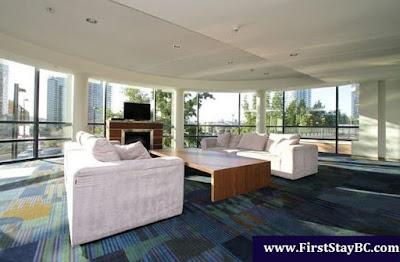British Columbia, also commonly referred to by its initials BC, is a province located on the west coast of Canada.
British Columbia is also a component of the Pacific Northwest and the Cascadia bioregion, along with the US states of Idaho, Oregon, Washington and Alaska. The province’s name was chosen in 1858 by members of the Hudson’s Bay Company. In 1871, it became the sixth province of Canada.
The
capital of British Columbia is Victoria, the
fifteenth-largest metropolitan region in Canada, named for the Queen who created the Colony of British Columbia. The largest city is Vancouver, the third-largest metropolitan area in Canada, the largest in Western Canada, and the second-largest in the Pacific Northwest.
British Columbia evolved from British possessions that were established in what is now British Columbia by 1871. First Nations, the original inhabitants of the land, have a history of at least 10,000 years in the area.
Concerning the architecture of British Columbia, let’s start with Victoria, Western Canada’s oldest city, that was founded in 1843 as a Hudson’s Bay Company trading post.
Victoria’s roots have been carefully preserved and can be seen in its lovingly maintained historic and heritage sites.
One of the oldest and most famous buildings in Victoria is
The Fairmont Empress (most commonly known as The Empress). Located on Government Street facing the Inner Harbour, the Empress has become an iconic symbol for the city itself. It has been designated a National Historic Site of Canada due to its national significance.
Built-in 1908 for Canadian Pacific, the Fairmont Empress Hotel is one of Victoria’s best-loved landmarks. Architect Francis M. Rattenbury designed the Empress, and entering the vast lobby of this luxurious hotel is like journeying back in time to before the First World War. This luxury hotel showcases the spirit and energy of Vancouver Island in grand style. With its turn-of-the-century beauty, The Fairmont Empress resort captures the grandeur and elegance of a bygone era, while its facilities and services meet the needs of today’s traveller.
Dominating the south side of the Inner Harbour is the imposing seat of British Columbia’s provincial government,
the Parliament Buildings. Designed by Yorkshire architect Francis M. Rattenbury and erected in 1897, the imposing stone buildings have neat, orderly gardens and are very attractive in appearance – especially in the evening when lit by festoons of lights.
Perched high above the massive dome is a gilded statue of Captain George Vancouver (1757-98), who accomplished the first circumnavigation of Vancouver Island. Figures of famous personalities from the province embellish the façade. A large statue of Queen Victoria surveys the Inner Harbour from the terrace. Tours of the town centre by horse-drawn carriage leave from nearby.
The next famous architectural landmark in Victoria is the
Royal British Columbia Museum.
The museum was founded in 1886 in response to a petition signed by 30 prominent citizens. It was housed in a single room adjoining the Provincial Secretary’s office in the Capital Buildings – nicknamed “the Bird Cages”.
Over the next 12 years, the Museum was relocated twice, first to the former Supreme Court building, and then in 1898, to the East Wing of the newly constructed Legislative Buildings. The Museum grew by leaps and bounds. On April 1, 2003, through the proclamation of a new Museum Act, the BC Archives, Helmcken House, the Netherlands Carillon, Thunderbird Park, St Ann’s Schoolhouse and the Royal BC Museum came together as the Royal BC Museum Corporation, creating a unique cultural precinct in the heart of British Columbia’s capital city.
The largest metropolitan area in Western Canada is slightly different from the capital. We talking about Vancouver one of the biggest cities in Canada. This megapolis is huge and continue growing, Unlike Victoria’s colonial-style old charmer buildings Vancouver’s known for its transparent glass aesthetic, for much of the city’s downtown, leading to its 21st moniker as the “City of Glass” and “See Through City”.
But in spite of that, you can find here old Art Deco buildings such as
the Marine Building on West Hastings.
Back when this tower was built, it enjoyed almost a decade of being the tallest building in the British Empire. It may no longer be the tallest but it is definitely the most impressive example of Art Deco architecture in the city and maybe even the country. From the interior fixtures to the carved stone, all of the details of the building showcase marine symbols. I strongly recommend lingering in front of the impressive brass doors of the main entry and admiring the illustrative carvings in the surrounding stonework.
Another interesting architectural Sight in British Columbia is Richmond. This city contains the most unusual architectural creations. Richmond attracts visitors with its multicultural shopping and dining opportunities, and its unique historic and heritage sites.
Sixty per cent of Richmond’s population is of Asian descent, which gives the city its rich multicultural vibe. Shopping and dining in the Golden Village area are among the most authentic experiences outside of Asia.
For example the
International Buddhist Temple in Richmond, B.C., one of the largest Buddhist temples in the Northwest. The temple, built on 3.5 acres, is modelled after the Forbidden City in Beijing, China.
This large, classical Chinese temple was founded in 1979, after two devout Buddhists, who had emigrated from Hong Kong to Canada, donated $300,000 (Canadian) and one acre of land to establish a genuine Chinese temple in Richmond.
So that we can make sure, that architecture in British Columbia as different and unique as its citizens.














































